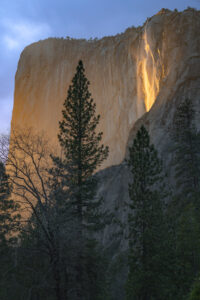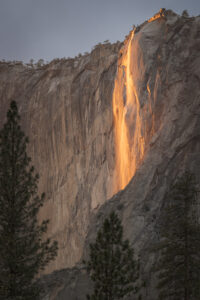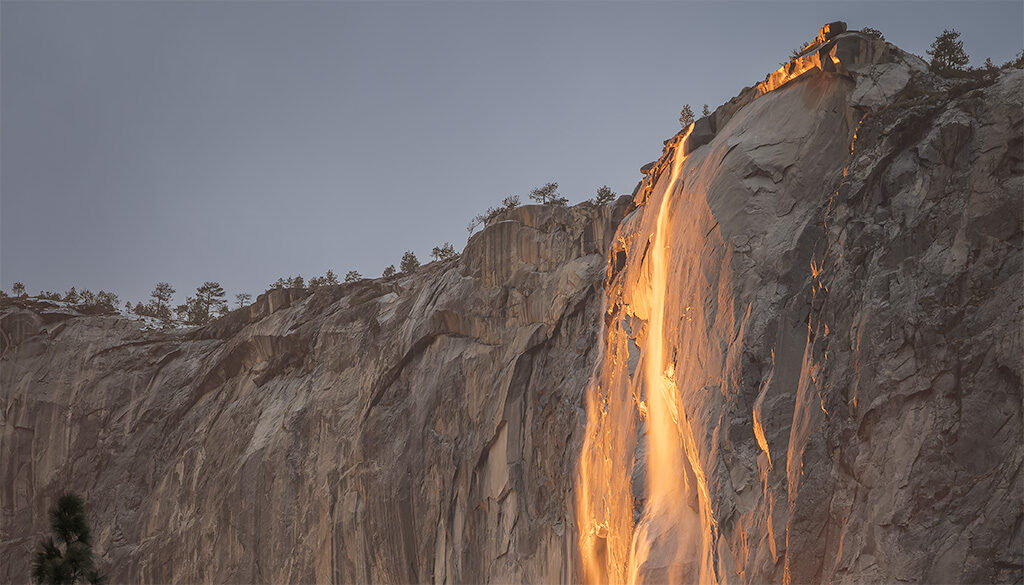Horsetail Fall 2025
Understanding the Horsetail Fall Phenomenon

Fed by snowmelt, Horsetail Fall flows only during late winter and early spring. The glowing effect happens during a narrow window in mid-to-late February when the sun aligns perfectly with the fall at sunset. The conditions must be just right: there must be enough snow in the Horsetail Fall watershed, warm enough temperatures to melt snow feeding the fall so that enough water is flowing, and clear skies to the west to allow sunlight through. If these things all happen, the light progresses from golden to fiery orange and red over a span of about 10 minutes before fading.
Techniques for Capturing Horsetail Fall
- Composition: Frame Horsetail Fall prominently while including elements like trees or granite cliffs to provide context.
- Settings: Use manual mode for precise control. Start with an aperture of f/8 to f/11 for sharpness, and adjust ISO to keep shutter speeds manageable as the light fades.
- White Balance: Set it manually to enhance the warm tones of the glowing water.
- Bracketing: Take multiple exposures at different settings to capture varying light intensities.
Tips for Success
-

Yosemite National Park, California | Feb 2025 Be Patient: Conditions can change quickly. Even if clouds obscure the sun initially, stay hopeful as they may clear just in time.
- Respect Nature: Follow park rules, stay on designated paths, and avoid damaging vegetation.
- Have Backup Plans: If conditions aren’t ideal, explore other winter photography opportunities in Yosemite such as Yosemite Falls or snow-covered meadows.
- Never Count Out Horsetail Fall: Do not be fooled by non-optimal conditions earlier in the day. Horsetail Fall can and will surprise you. On February 19 this year, conditions were abysmal until five minutes before the awesome spectacle shown above.




